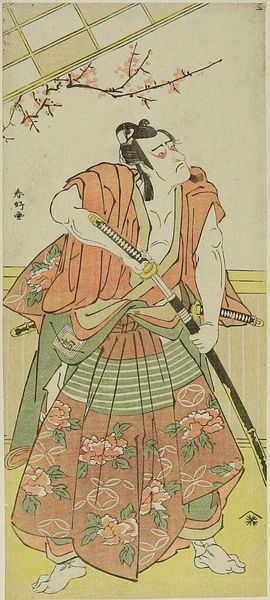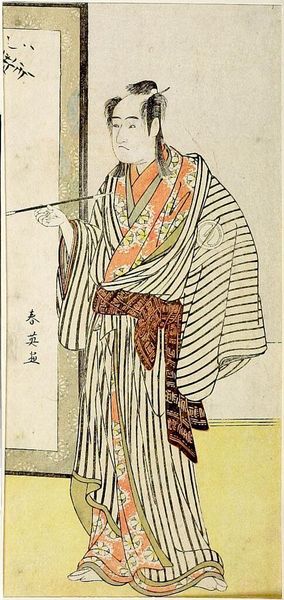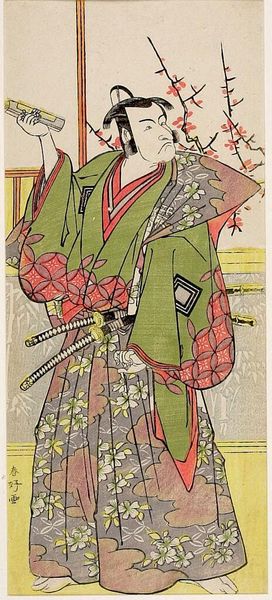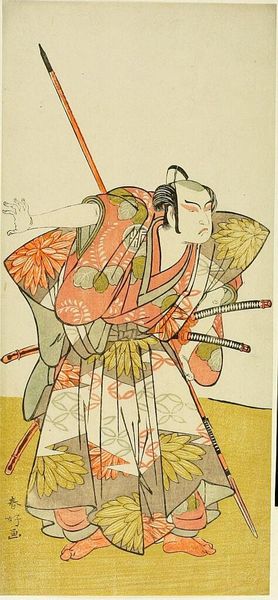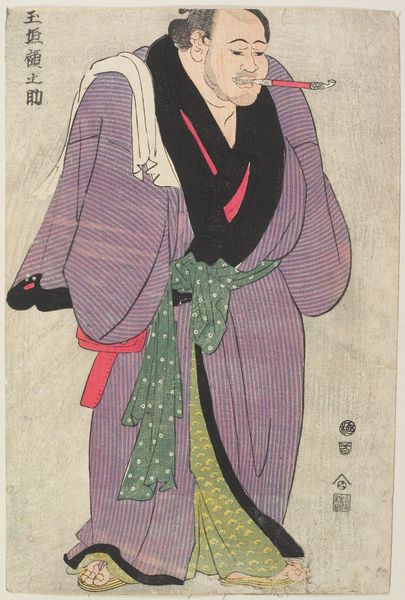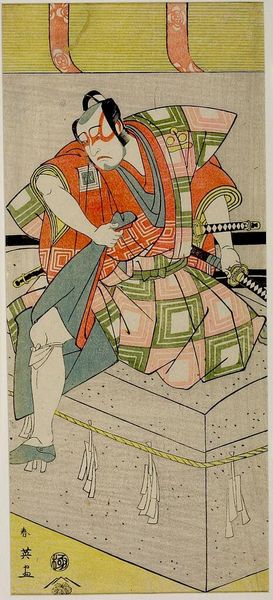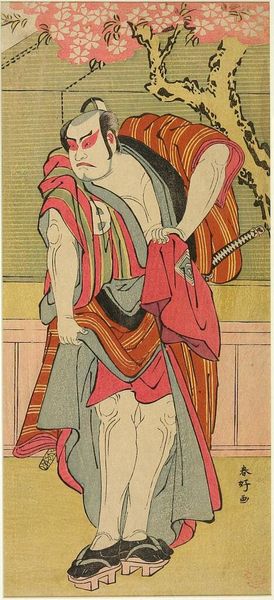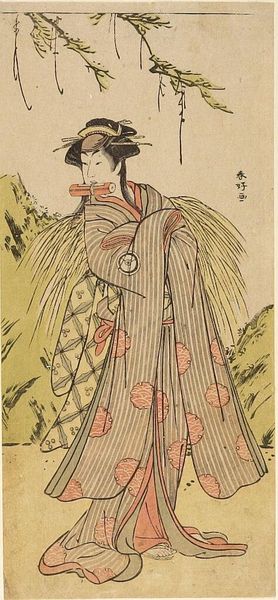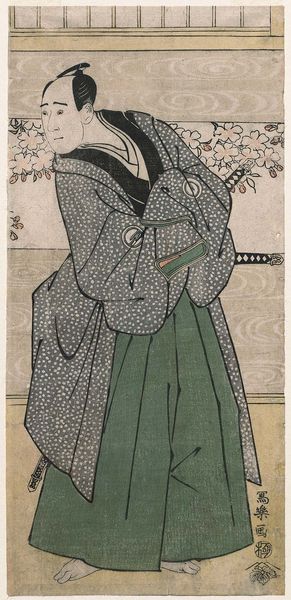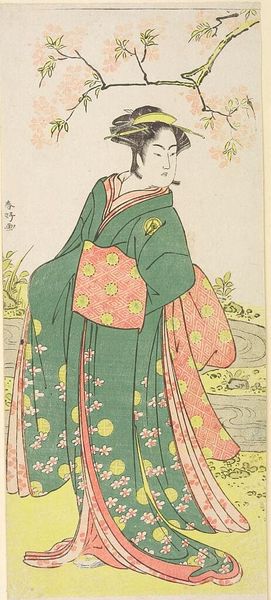
Copyright: CC0 1.0
Curator: Here we see "Actor Ichikawa Danjuro 5th as a Samurai" by Katsukawa Shunko, housed right here at Harvard Art Museums. Editor: The color palette is unexpectedly soft, almost muted, given the subject matter of a samurai. It’s rather calming. Curator: Indeed. Shunkō, known for his actor portraits, likely used woodblock printing, a process demanding skilled artisans to carve and print each color layer. The materiality itself speaks to a collaboration, a social endeavor. Editor: And the figure’s posture! It’s more like a contemplative bow than a battle-ready stance. It seems to subvert stereotypical notions of masculinity and power. Curator: Perhaps Shunkō aimed to capture the actor's persona, not just a literal depiction of a samurai. These prints were, in essence, a form of popular culture, consumed and circulated widely. Editor: Which makes you wonder: How did the representation of powerful figures like samurais influence the broader social imaginary and power dynamics of the time? Curator: Food for thought, certainly. A fascinating interplay between performance, identity, and material culture. Editor: It prompts questions about the very construction of the samurai image, then and now.
Comments
No comments
Be the first to comment and join the conversation on the ultimate creative platform.
